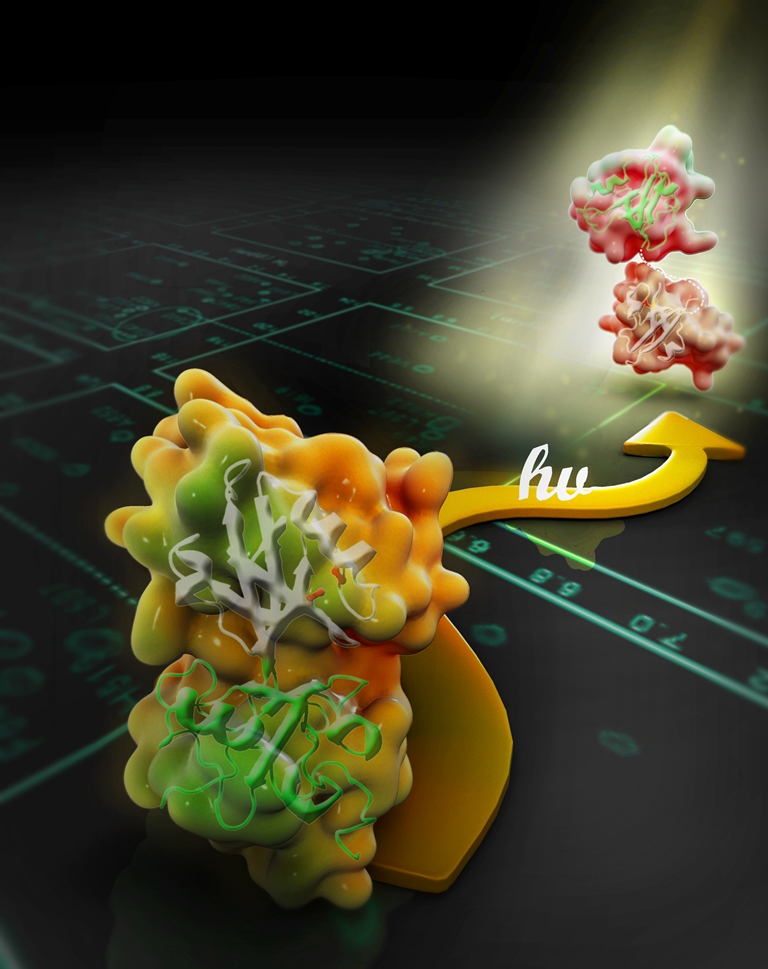HKUST Achieves Breakthrough Discovery On Mechanism Behind Visual Systems
The Hong Kong University of Science and Technology (HKUST) Chair Professor Mingjie Zhang and his team of researchers in the Division of Life Science have achieved significant breakthrough concerning the visual systems of animals detecting light. The discovery has been published in Cell, one of the most prestigious scientific journals in biomedical sciences, as the cover story in its latest issue.
Prof Mingjie Zhang and his research group have set a milestone and achieved a breakthrough discovery in understanding how animal photoreceptors can detect light signals with very broad intensity ranges and at very rapid speed, and how human eyes regulate light intake in response to varying lighting conditions. The discovery contributes to research on human visual disorders such as retinitis pigmentosa and night blindness, which are extremely common human eye diseases affecting approximately one out of every 3,000 people at all ages. In addition, it has broad implications to many different types of biological signal transduction events that are related to human diseases including cancer, neuro-degenerations, various immune disorders etc - since protein oxidations are known to be associated with these biological events.
Scientists have been working for decades in their attempts to tease out the action mechanisms of animal visual systems, such as how they detect light under varying conditions ranging from dark nights to days with bright sunlight. The vast majority of animals have visual detection systems known as photoreceptors of one sort or another for detecting food source, mate, predator / prey, orientation. Whereas photoreceptors throughout the animal kingdom are diverse in design and purpose, the mechanisms by which absorbed light signals (or photons) are converted into visual responses (or electrical responses) are highly similar.
Using fruit fly photoreceptor as a model system, Prof Mingjie Zhang's research team at HKUST has discovered that a scaffold protein called INAD in the animal eyes can undergo a light-dependent architectural or molecular shape change, thereby regulating light signal detection speed as well as signal output amplitude. This light-dependent molecular shape change of INAD protein is resulted from a rapid oxidation/reduction cycle in the eyes of animals.
"Under dim light, the reduced INAD protein keeps the fly visual system at the highest sensitivity for light detection. Increasing light intensities proportionally convert INAD into oxidized form and thus tune down the signal receiving sensitivity of photoreceptors. Thus, the INAD scaffold protein functions as a 'rheostat' in the animal visual detection system," said Prof Zhang.
Prof Mingjie Zhang said, "It has been a known fact that the visual systems of human beings as well as insects such as flies are able to detect a vast environmental range of intensities spanning more than a million fold of magnitude from starlight to direct sunlight with extreme rapid speed of tens of millisecond time scale. Defects in such processes can be disastrous." For example, it would mean disasters if it takes up to a few seconds or longer - rather than a fraction of a second - for a person to respond to an approaching car on the road, or for a fly to react to a flyswatter.
The Biological NMR Center at HKUST, where Prof Zhang and his research team make breakthrough discoveries, is one of Asia's most advanced facility with an 800 MHz NMR spectrometer, a 750MHz NMR spectrometer and a 500 MHz NMR spectrometer. Prof Zhang's team focuses on neuronal structural biology using a combination of NMR spectroscopy, X-ray crystallography, biochemistry, molecular biology and cell biology approaches.
HKUST President Tony F Chan said, "We are extremely delighted that Prof Mingjie Zhang and his research team have made breakthrough discovery concerning visual systems of animals, and that it has been published in Cell, the top journal in biomedical sciences. It is the mission of HKUST to foster scientific research and achieve breakthroughs for the betterment of humankind."
Prof Zhang's exciting discovery has been selected as the cover article in the 24 June issue of Cell. This is the second time his team at HKUST has been publishing their major discoveries in Cell. His team's earlier discovery on how myosin VI functions in visual and hearing system was published in Cell in 2009, and its latest updates on myosin VII had been published in top scientific journal Science in February this year.
Related information:
Powerpoint presentation by Professor Mingjie Zhang at the media briefing
For media enquiries, please feel free to contact :
Kit Yip
Tel: 2358 6313
Email: kityip@ust.hk











